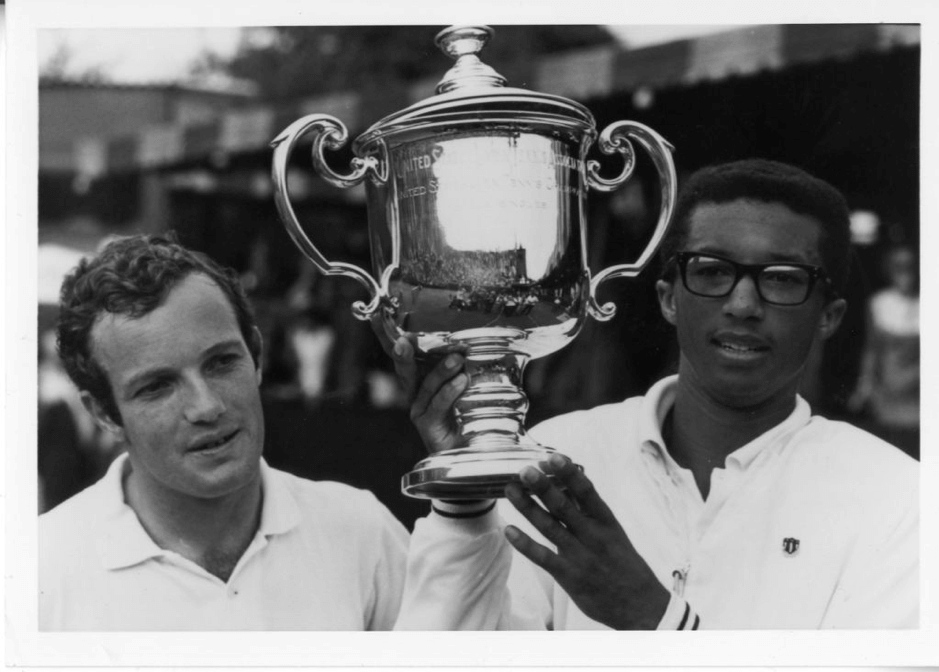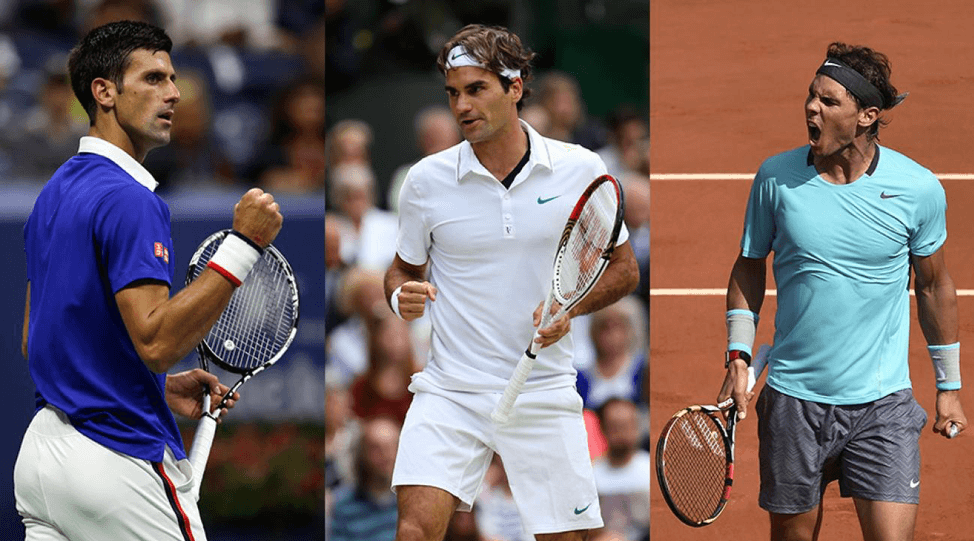THE ATP POINTS SYSTEM AND THE RACE FOR THE YEAR-END NO.1

What’s something that if player conferences were to be believed in, would seem as worthless as a mid-season Laver Cup tournament, but is in fact on all top players’ minds in their quest to enhance their claims for greatness. The race for the ATP year-end No. 1. What is this coveted title?
It’s simple. Tennis players play tennis tournaments, accumulate points over a calendar year, and the player with the most number of points at the end of the year claims the year-end No. 1. No matter which player has how many weeks at number 1 throughout the year, the player who nips it right at the end goes down in history; his name plastered all over record books, his legacy passed down over centuries.
But there’s no cheating your way to this title. Every player who claims it earns it. One has to be the best on tour for an entire year. And for those for whom one isn’t enough, multiple year-end No. 1 titles become prized assets akin to trophies for the cabinet. It’s an exclusive league in which only a handful of the most legendary names in the sport can attest to be a part of.
Lleyton Hewitt, along with the Swedes Stefan Edberg and the great Björn Borg can boast of having two apiece. Rafael Nadal, Ivan Lendl and the mercurial John McEnroe have four each while America’s marathon career man Jimmy Connors, and the rest of the big three in Roger Federer and Novak Djokovic with five each. And ‘Pistol’ Pete Sampras with an untouched record claiming six.

As a fan following the race for the year-end No. 1, one checks the rankings leaderboard. The player at the top of the rankings, in lead with the points, ideally has a strong claim over the title. Simple isn’t it? Not really. Despite Djokovic being the current world No. 1 on 10,365 points and Nadal being the world No. 2 on 9,225 points with about a month left on the tour, it’s in fact Nadal who would be said to have the slight advantage in ending the year on top. This is because even if Djokovic wins the ongoing Shanghai Masters tournament, he doesn’t gain any points. In fact, he loses points if he doesn’t win the tournament.
Whereas Nadal gains points even if he reaches the second round. So how does one make head or tails of this? How does one explain this bias? By understanding the ATP points system once and for all.
The ATP points system explained once and for all
It really becomes all too simple after one understands two things- one, how many points every tournament is worth.
The ATP Tour comprises of World Tour 250 series like the Qatar Open and Stuttgart Open where the winner is awarded 250 points. They are scattered in number and usually top players tend not to participate. World Tour 500 series like the Barcelona Open and the Swiss Indoors in Basel are competitions where the winner is awarded 500 points. There are currently 13 tournaments in this category.
Tour Masters 1000, like the Indian Wells and the ongoing Shanghai Masters award1000 points to the winner. There are 9 masters tournaments, each of which is a staple in every top player’s calendar schedule. The ATP World Tour Finals is where only the top 8 tennis players participate at a season ending tournament in London. The winner can earn a maximum of 1500 points.
Lastly, the 4 Majors or the Grand Slams – Australian Open, French Open, Wimbledon and the US Open, each of which are worth 2000 points each. These are the tournaments where a lot more is at stake than just ATP points. These are the tournaments where legends are made.
Subsequently, the finalists are rewarded with lesser points than the winners and the semi-finalists with lesser points than finalists and so on. For instance, Grand Slams offer 1200 points to the finalists and 720 points to the semi-finalists.
The second point worth remembering is that every player’s points are calculated from their participation in all tournaments in the last 12 months.
Which is why the world No.1, in say March, is decided on player performances up till March of that year and the months of April to December of the previous year in what comprises a full 12-month calendar window.
Importantly, every time a tournament concludes, the updated points replace the points awarded by the tournament in its previous year’s edition. This is why players are seen as not gaining points even if they win tournaments, or even losing points upon reaching certain stages of a tournament. As an example, Djokovic who won last year’s Shanghai Masters was awarded 1000 points for the same. Winning it this year means he defends his 1000 points and doesn’t actually get any extra. Losing in the finals (an award of 600 at ATP Masters) means he loses 400 points – seeing a deduction of his 1000 points from last year and gaining this year’s 600.
The Race
The tennis season is at its tail end. Tennis whirlwinds Djokovic and Rafael Nadal are battling for the year-end No.1, like they have been for the last 3 years and a major part of the last decade. All four grand slams have concluded with the Serbian taking the Australian Open and Wimbledon as well as the Spaniard taking the French Open and the US Open. Of the 9 Masters titles, Shanghai Open and Paris Open remain, along with the finale at the O2 arena in London: the ATP World Tour Finals.
To put things in context, considering that everyone understands how the ATP points system works, Djokovic is at 10,365 points currently. He won last year’s Shanghai Open and was the finalist at the Paris Open as well as the World Tour Finals. This means he defends a combined 1000, 600 and 1000 points respectively, i.e., a total of 2600 points. If he wins all 3 tournaments, he will gain 0, 400 and 500 points respectively, a total of 900 which will bring his tally to 11,265 points for the calendar year.
Nadal currently sits at 9,225 points. Where his advantage lies is that he missed all 3 tournaments last year due to injury and as a result, he has all points to gain, 1000, 1000 and 1500, a total of 3500 in comparison to Djokovic’s 900. His disadvantage, like last year, like most of his career is that he misses this year’s Shanghai Open due to an injury sustained in his wrist at last month’s Laver Cup. His scheduled marriage to his long-standing partner Xisca Perelló for this month also poses questions on his appearance at the Paris Open.
With a remaining 2500 points to claim for Nadal and 900 points with a lead of 1100 for Djokovic, the race is in its nail-biting final lap. Djokovic has very little margin for error. Losing at either tournament means he would only lose points rather than gain them. But then when have margins ever mattered to the Serb? Nadal has all points up for grabsakin to trophies
, but will his battered body once again prove costly towards the end of the season? Or will he win at all at his less preferred indoor hard-court surfaces, at the only 2 tournaments that he has failed to win as a professional?
Tune in to this week’s Shanghai Open and more importantly the upcoming Paris Open and World Tour Finals. Of all the things that are at stake, the race for the year-end No. 1 is one. One of the big three will take it for the 16th year running, (apart from what was a slight English disturbance in the middle).
Djokovic, Nadal and Federer will be back next year, going for Pete Sampras’s record of 6 year-end world No. 1 titles, one of the few remaining records that they haven’t conquered yet. But in an enthralling end to this year, Nadal will try to level with Federer and Djokovic with his fifth, while Djokovic will continue his relentless push towards immortality.
Read More
THE 1968 US OPEN: A NEW CHAMPION, A NEW ERA
AVICHAL GUPTA \
THROWBACKS
THE TENNIS NEXT GEN- A CASE FOR THEIR HELPLESSNESS
ANANYA CHANDRA \
FEATURES
ANGER AND ITS TRYSTS WITH CHAMPIONS
KUSHAGR DIXIT \
FEATURES



